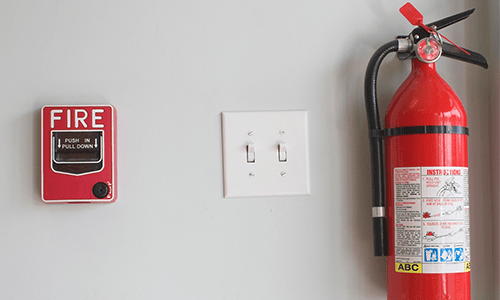I’m obsessed with HGTV and one of my favorite shows is Flip or Flop. It’s based on two successful real estate agents who renovate distressed homes and sell them for what mostly turns out to be a substantial profit. They make it look easy right? How hard can a home rehab really be and why aren’t more people doing it? Well the answer is easy, it’s a hard job. It requires a ton of planning and years of experience in order to make the jobs look easy. These two have house flipping down to a science, from selecting the properties, working with the right contractors to get the job done and then pricing the home just right to get the offers they need for a quick sale.
Much like house flipping, coordinating large capital investment projects at associations might look easy on the surface, but reality is much different. About 80% of the work involved with managing a successful capital investment project is in the planning stage. Absent putting the right amount of time and effort in these projects will most certainly end up in costly errors that will result in a “flop” project.
Here are some tips to consider in order to make your project a “Flip”:
Set the Right Timeline:
Several years ago, I sat with a potential client who was considering my company as their management agent. The meeting took place sometime in August and this client explained to us that their biggest priority was a multi-million dollar window replacement project that absolutely must get done before the end of the year. They asked us, “If we select you as our management company, can you assure us that you can get this done?”. My answer was “Most certainly, no.”. Here is why:
We would have had no time to do the proper planning on this project. Between engineer reviews, reports, RFP’s, financing, pre-construction walk throughs and homeowner access we would have to skip vital steps in the planning phase to even get to a point where we would have been able to consider executing on the project. Custom windows take weeks, sometimes months to order and even if we moved quickly, we would have been replacing owners’ windows in the dead of winter which only gives the owners the impression that we are poor planners. I explained to this client that in order to do this right, we recommend planning to execute on this project around the same time next year. This was not the answer our prospective client wanted to hear of course and I was worried that it would have affected our chances of winning their business. Needless to say, we still got the contract and just over a year later we were able to successfully complete a well planned and executed project.
As managers, we are often faced with juggling multiple projects at once and the quicker we can check things off our list, the better. This can never be the case with capital investment planning. When asked to work on a large-scale project, make sure you are communicating the right timeline in advance. This sets the right expectations to your board and gives you the time to properly plan this project. Engineering work, bidding, financial planning, contractor interviews, selection, scheduling and our lovely mid-west weather can all have a huge impact on timelines. Work through each of these points with your association and set aside the right amount of time to properly plan these projects.
Get the Experts Involved
I see way too many projects flop because an association decided to move forward with a project without the right oversight or “experts”. Community Managers are often expected to oversee and be the expert on a host of large projects including roofing, masonry, window or large mechanical work. The only thing managers can really be considered experts on in instances like these is recommending the right experts to get the job done. This is where a professional manager can create value for associations.
The most commonly skipped “experts” I see with flopped projects are engineers/architects or general contractors and legal experts. Most of the time, these vital components are skipped because someone “has a guy” they know or trust, or they don’t fully understand why these experts are needed. Here is my take:
Engineers/Architects/GC’s: These vendors are vital to just about any project. They review the requirement and develop a scope of work based on a solution set that will ensure the most efficient resolution to the issue that identified the project in the first place. Having a thoroughly identified scope of work will ensure apples to apples bids. It can also avoid costly work change-orders down the road.
Legal Experts: Before executing on any contracts for capital investments, it is strongly recommended that the association’s counsel review and comment. Associations need to ensure the contract has protections built in should something not go according to plan. Attorneys review contracts on a daily basis so they are able to identify industry and bench mark standards and will always look out for the association’s best interest.
Develop the Right Budget
In an ideal world, associations should have a fully funded reserve account to handle large capital investment projects. With our economy slowly stabilizing, we are seeing many associations plan for capital investment projects with special assessments, loans or lines of credit due to lack of reserve funding. Determining the amount a project will cost will take some consideration before levying these special assessments to ensure associations are covered.
When planning a budget for a capital investment project, ensure you capture the following expenses:
- Project Manager/Engineer/Architect: What will it cost for someone to develop a scope of work, bid and oversee the project? Ensure you agree on any not to exceed terms if some of the rates are hourly and budget conservatively if there are any varying factors with this contract.
- Main Contractor Cost: This is your roofer, mason, window contractor etc. The bulk of your cost should be with this line item and it should cover the full scope of work identified in your bid specification.
- Legal: This item is often overlooked when considering project budgets. A legal review of the contract should for sure be included in the budget. Other items you may need in conjunction with your project are opinion letters to define repair scope responsibility and/or any unexpected legal issues that arise as a result of the project. Disputes with homeowners or contract disputes can easily put a project over budget, especially since they are most always unexpected.
- Contingency: I recommend that all associations consider adding a contingency to their project budgets. Aside from all the items highlighted above, there is always a chance that the unexpected can occur. If you are funding a project via a loan or special assessment, the last thing you need is to run out of funds in the middle of your project. Contingency amounts can vary from project to project and your engineer or architect can recommend an amount. Absent guidance from them, I recommend budgeting at least 10% of the total project cost if possible.
Hold a Home Owner Information Session:
An important step that is too often skipped with association capital investment projects is an informational session for the homeowners. This is a vital step, especially if an association plans to levy a special assessment to fund this project. A Board of Directors and Manager may extensively know the reason why a project needs to be complete, but having an informational session for the homeowners will ensure they have an opportunity to understand the project and why a special assessment (if any) is needed. I find that holding these well in advance of the project creates much more buy-in with the owners and much less push back or disruption when you are trying to execute these repairs.
At these informational sessions, consider putting together a power point presentation with plenty of pictures and details of the project scope. I also recommend having your project manager, contractor and if necessary attorney and banker attend this session as well. Having all the experts in the room will allow the owners to have access to all the information they need in order to be comfortable with the project.
Having this session is not a requirement of an association in order to approve projects or special assessments of course, but they are invaluable to increase communication within an association and to avoid complaints down the road. If an owner is required to pay additional money for a special assessment, they will appreciate the extra effort that goes into ensuring they understand where their money is being spent.
With the weather forecast finally looking optimistic, the capital investment and construction season is well underway. Many of you are just starting to execute projects and many of you may be considering or investigating projects in the future. I hope these tips above will ensure you all are able to successfully “flip” your projects.
Best of luck!
Written By: Rachel Kegley, PCAM




 Laura Lau Marinelli
Laura Lau Marinelli 
 Fred Schroeder
Fred Schroeder 


